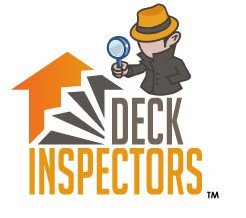Ensuring Safety: A Comprehensive Guide to SB 326 Inspections

The safety and structural integrity of decks, balconies, and other elevated exterior elements are crucial for multifamily properties. California Senate Bill 326 (SB 326) was introduced to address these concerns, requiring routine inspections of elevated exterior elements (EEEs) in multifamily residential buildings. Navigating these requirements can seem overwhelming for property owners and homeowner associations (HOAs). This guide breaks down the essential aspects of SB 326 inspections and offers practical steps to ensure compliance. What Are SB 326 Inspections? SB 326 inspections identify safety hazards in EEEs, including balconies, decks, walkways, and stairways supported by wood-based framing. These components are vulnerable to water damage, rot, and structural wear, especially in California’s diverse climate. The law mandates that EEEs in multifamily residential buildings with three or more units undergo inspections at least once every six years. A key provision of SB 326 requires that a minimum of 15% of each type of EEE be inspected. This ensures a representative sample without imposing excessive costs. The inspections must be performed by licensed professionals with relevant expertise, such as architects, structural engineers, or general contractors. The findings from SB 326 inspections must be documented in a detailed report, including the condition of the elements, any observed deficiencies, and recommendations for maintenance or repairs. These reports ensure safety and compliance and protect property owners from potential liability. How To Prepare 1. Understand the Scope of the Law Before scheduling an inspection, familiarize yourself with SB 326’s requirements. This includes understanding which components of your property fall under the scope of the law and ensuring you meet the inspection deadlines. For HOAs, it’s also essential to budget for these inspections and any potential repairs. 2. Hire Qualified Inspectors Not all inspectors are created equal. To meet SB 326 requirements, hire a licensed professional with experience in evaluating EEEs. Qualified inspectors will assess key components such as wood framing, waterproofing systems, and connection points for signs of wear, damage, or deterioration. 3. Address Deficiencies Promptly If deficiencies are identified during the inspection, prompt action is essential. SB 326 mandates inspections and emphasizes timely maintenance and repairs to mitigate safety risks. Common repairs include sealing leaks, replacing damaged wood, and reinforcing structural connections. 4. Keep Detailed Records SB 326 requires HOAs to maintain inspection reports and documentation of completed repairs for at least two inspection cycles (12 years). A well-organized record-keeping system ensures you’re prepared for audits or disputes and demonstrates your commitment to compliance and safety. Why SB 326 Is Critical SB 326 inspections go beyond compliance to ensure the safety and well-being of residents. Regular inspections help identify hidden hazards before they escalate, preventing accidents and preserving the structural integrity of your property. Moreover, proactive maintenance driven by inspections can reduce long-term repair costs and enhance property value. For HOAs and property managers, meeting SB 326 requirements also reduces legal liability, protecting against potential claims resulting from neglected maintenance. By partnering with experienced inspectors and prioritizing regular upkeep, you can confidently navigate SB 326 inspections. Schedule an inspection today to ensure your property’s safety and compliance and safeguard your residents and investment for years. Click here to get in contact with an expert from Deck Inspectors today! Deck Inspectors for Southern California is happy to offer our services in Los Angeles County, Riverside County, Orange County as well as San Diego County and all Southern California surrounding areas like: Los Angeles, Irvine, Long Beach, La Jolla, Glendale, Pasadena, Santa Ana, Huntington Beach, Dana Point, Burbank, Santa Monica, Anaheim, Temecula, Encinitas, Chula Vista, Vista, Mesa, San Diego, Oceanside, Escondido, Carlsbad, Poway, Mission Viejo, and El Cajon.
The Cost of Non-Compliance: Fines and Penalties under SB 721
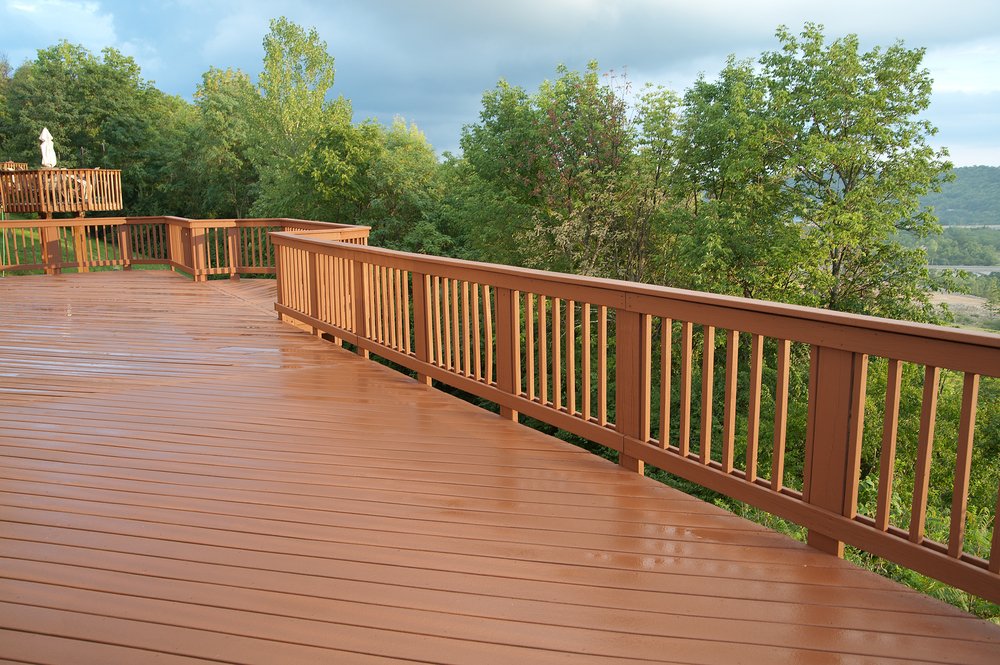
California Senate Bill 721 (SB 721) was enacted to ensure the safety and structural integrity of elevated exterior elements (EEEs) like balconies, decks, and walkways in multifamily residential properties. Property owners and managers must conduct regular inspections to identify potential hazards and address them promptly. However, failing to comply with SB 721 can result in steep financial penalties, legal consequences, and increased liability risks. This article will explore non-compliance costs and why property owners must adhere to SB 721 requirements. Financial Penalties for SB 721 Non-Compliance 1. Fines for Missing Inspection Deadlines Under SB 721, property owners must complete the first inspection by January 1, 2025, and subsequent inspections every six years. Failure to meet these deadlines can result in significant fines from local authorities. The exact penalties vary by jurisdiction, but property owners may face fines for every day the inspection is overdue. In many cases, these fines can accumulate quickly and cost thousands of dollars. 2. Costs of Ignoring Required Repairs If an SB 721 inspection identifies structural deficiencies, property owners must address them within 120 days. Extensions may sometimes be granted, but ignoring repair deadlines can result in additional fines. Moreover, deferred maintenance often results in more expensive repairs down the line. For example, a minor issue like water damage can escalate into widespread rot or structural failure, multiplying repair costs exponentially. Legal and Liability Risks 1. Increased Liability in Accidents or Injuries One primary purpose of SB 721 is to prevent accidents caused by structural failures of EEEs. If a property owner fails to comply with the law and a tenant or visitor is injured due to a preventable issue, the owner could be sued for negligence. Legal settlements or judgments in such cases can far exceed the cost of compliance. Beyond financial repercussions, these incidents can severely damage a property owner’s reputation. 2. Government Enforcement Actions Non-compliance with SB 721 can prompt local authorities to enforce repairs or inspections. Sometimes, they may issue stop-work orders, mandate emergency repairs, or even declare certain parts of the property unsafe for occupancy. These enforcement actions can disrupt normal property operations and lead to loss of rental income. The Case for Staying Compliant Compliance with SB 721 is not just a legal obligation—it’s an investment in your property’s safety and longevity. While inspections and repairs may require upfront costs, they pale compared to non-compliance’s potential financial and legal consequences. Proactively adhering to SB 721: Protects tenants and visitors from harm. Minimizes liability risks and legal exposure. Ensures the long-term structural integrity of your property. Helps you avoid hefty fines and enforcement actions. Don’t Risk SB 721 Non-Compliance The cost of failing to comply with SB 721 can far outweigh the expenses associated with timely inspections and repairs. By taking action now, property owners can ensure they meet inspection deadlines, address deficiencies, and safeguard their investments. Stay ahead of state requirements by scheduling your inspection with a qualified professional today. Protect your property, tenants, and bottom line. Click here to get in contact with an expert from Deck Inspectors today! Deck Inspectors for Southern California is happy to offer our services in Los Angeles County, Riverside County, Orange County as well as San Diego County and all Southern California surrounding areas like: Los Angeles, Irvine, Long Beach, La Jolla, Glendale, Pasadena, Santa Ana, Huntington Beach, Dana Point, Burbank, Santa Monica, Anaheim, Temecula, Encinitas, Chula Vista, Vista, Mesa, San Diego, Oceanside, Escondido, Carlsbad, Poway, Mission Viejo, and El Cajon.
How to Choose a Qualified Inspector for SB 721 Inspections

California Senate Bill 721 (SB 721) was introduced to ensure the safety of elevated exterior elements (EEEs) in multifamily properties, such as decks, balconies, and stairways. Property owners must hire a licensed professional to conduct critical inspections to comply with this law. However, not all inspectors are equipped to meet SB 721’s stringent requirements. This guide outlines the essential qualifications and factors to consider when selecting a certified inspector for SB 721 inspections. Key Qualifications to Look For in an SB 721 Inspector 1. Proper Licensing and Certification SB 721 inspections must be conducted by a licensed professional, such as: A structural engineer (SE) A licensed architect A general contractor with experience in EEEs Verify the inspector’s license number and ensure it is active and in good standing. Professionals with these credentials have the expertise to evaluate the structural integrity of wood-based framing, waterproofing systems, and load-bearing components. 2. Relevant Experience Not all licensed professionals have experience with SB 721 inspections, so choosing someone familiar with this specific regulation is important. Ask potential inspectors about their experience conducting inspections for multifamily properties. Request examples of completed inspection reports to ensure they understand the scope and requirements of SB 721. Questions to ask about experience: How many SB 721 inspections have you conducted? Are you familiar with California’s unique climate challenges, such as moisture and temperature fluctuations, that impact EEEs? Have you worked with properties similar to mine in size and scope? 3. Knowledge of SB 721 Requirements An inspector must have a thorough understanding of SB 721’s provisions, including: The mandate is to inspect at least 15% of each type of EEE. Assessment of wood-based components for signs of water intrusion, rot, and deterioration. Documentation and reporting requirements, including timelines for submitting inspection results. Ensure the inspector is well-versed in the law and can provide clear guidance on compliance. Additional Factors to Consider When Hiring an SB 721 Inspector 1. Attention to Detail SB 721 inspections require a meticulous approach. Choose an inspector with a reputation for thoroughness and attention to detail. A comprehensive inspection can identify hidden hazards and prevent costly repairs in the future. 2. Clear Communication Skills Effective communication is critical when working with inspectors. The professional you hire should be able to explain their findings, provide actionable recommendations, and guide you through the compliance process. Review client testimonials or ask for references to assess their communication style. 3. Insurance and Liability Coverage Verify that the inspector carries professional liability insurance. This protects property owners in case of errors or omissions in the inspection process. Partnering with the Right Inspector Choosing the right professional for SB 721 inspections ensures compliance with the law and, most importantly, the safety of residents. Property owners can confidently navigate the inspection process by prioritizing credentials, experience, and attention to detail. Take the time to research and vet potential inspectors to protect your property and meet California’s regulatory requirements. Click here to get in contact with an expert from Deck Inspectors today! Deck Inspectors for Southern California is happy to offer our services in Los Angeles County, Riverside County, Orange County as well as San Diego County and all Southern California surrounding areas like: Los Angeles, Irvine, Long Beach, La Jolla, Glendale, Pasadena, Santa Ana, Huntington Beach, Dana Point, Burbank, Santa Monica, Anaheim, Temecula, Encinitas, Chula Vista, Vista, Mesa, San Diego, Oceanside, Escondido, Carlsbad, Poway, Mission Viejo, and El Cajon.
From Legislation to Practice: Navigating SB 326 Compliance
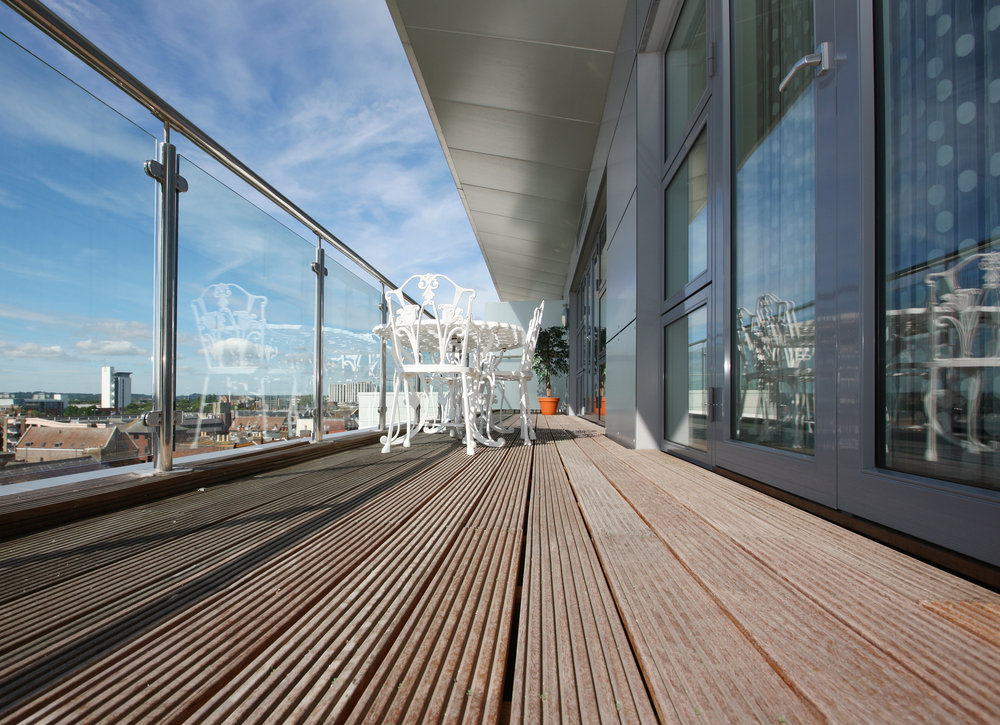
The passing of California Senate Bill 326 (SB 326) has introduced significant responsibilities for multifamily property owners and homeowner associations (HOAs). Focused on ensuring the safety and longevity of elevated exterior elements such as balconies and decks, SB 326 has shifted attention to regular inspections, maintenance, and repairs. This article explores what SB 326 compliance entails and how property owners and managers can effectively navigate its requirements. Understanding SB 326: The Legal Framework SB 326, enacted in 2019, requires periodic inspections of elevated exterior elements (EEEs) in multifamily residential properties with three or more units. These components, which include decks, balconies, walkways, and stairways supported by wood-based framing, are vital for occupant safety but are prone to wear and tear due to weather exposure and usage. The legislation mandates that inspections be conducted every six years by a licensed architect, structural engineer, or general contractor with relevant expertise. The goal is to identify safety risks such as water intrusion, wood rot, and structural weaknesses. Inspections must assess 15% of each type of EEE, ensuring a comprehensive evaluation without imposing an undue financial burden on property owners. HOAs must maintain detailed records of inspections and any necessary repairs for at least two cycles (12 years). Failure to comply with SB 326 can result in liability for injuries or damages resulting from neglected maintenance, making adherence to the law a legal and moral obligation. Steps to Achieve SB 326 Compliance 1. Hire Qualified Professionals The first step to SB 326 compliance is hiring licensed professionals to conduct the required inspections. Choose an inspector with proven experience in assessing EEEs to ensure accurate evaluations. A comprehensive inspection report should include photographs, a summary of findings, and recommendations for repairs or maintenance. 2. Address Maintenance and Repairs Promptly SB 326 emphasizes proactive maintenance to prevent costly future repairs or potential accidents. Once an inspection identifies safety concerns, property owners must promptly address them. Delaying repairs not only puts residents at risk but also increases liability. Prioritize issues like water damage, loose railings, or visible cracks in wood components. 3. Maintain Accurate Records Record-keeping is a critical aspect of SB 326 compliance. HOAs and property managers must retain inspection reports and maintenance records to demonstrate compliance during audits or in the event of legal disputes. Digital storage solutions can simplify this process, ensuring quick access to documentation when needed. 4. Educate Stakeholders SB 326 compliance is a collaborative effort. Educate residents, HOA boards, and property management teams about the importance of inspections and regular upkeep. Clear communication ensures buy-in from all parties and fosters a safety-first mindset across the property. Why Compliance Matters Complying with SB 326 is about more than meeting legal requirements—prioritizing safety and fostering trust with residents. Regular inspections help identify potential hazards before they escalate, saving lives and reducing liability. Additionally, well-maintained properties often retain their value better, offering financial benefits for owners and investors. Navigating SB 326 compliance may seem daunting, but it becomes a manageable and rewarding endeavor with the right partners and processes. Property owners can protect their residents, reduce legal exposure, and ensure long-term property integrity by investing in inspections and proactive maintenance. Take the first step toward compliance by scheduling an SB 326 inspection with a licensed professional today. Proactive planning today ensures peace of mind for tomorrow. Click here to get in contact with an expert from Deck Inspectors today! Deck Inspectors for Southern California is happy to offer our services in Los Angeles County, Riverside County, Orange County as well as San Diego County and all Southern California surrounding areas like: Los Angeles, Irvine, Long Beach, La Jolla, Glendale, Pasadena, Santa Ana, Huntington Beach, Dana Point, Burbank, Santa Monica, Anaheim, Temecula, Encinitas, Chula Vista, Vista, Mesa, San Diego, Oceanside, Escondido, Carlsbad, Poway, Mission Viejo, and El Cajon.
How Can Property Owners and Managers Prepare for SB 721?
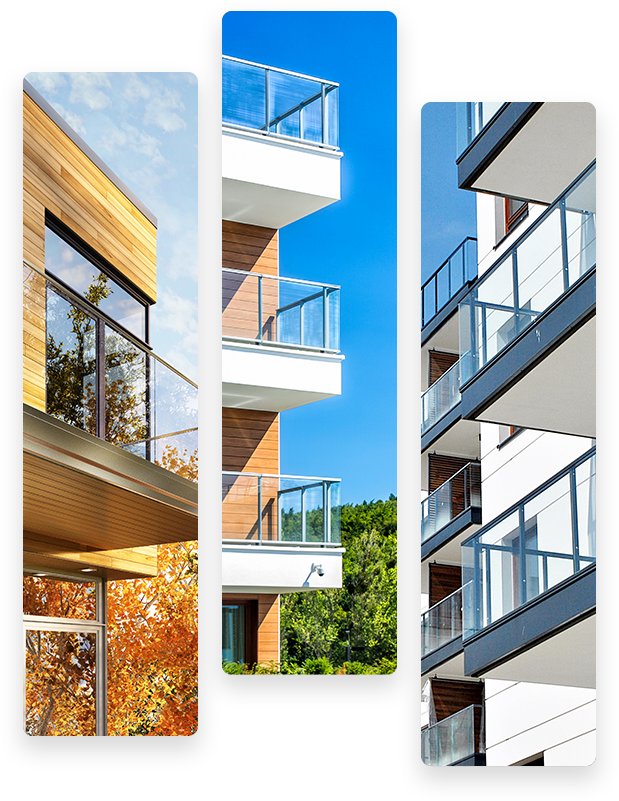
California Senate Bill 721 (SB 721) mandates regular inspections of elevated exterior elements (EEEs) in multifamily residential properties with three or more units. This law aims to prevent accidents caused by structural failures in decks, balconies, and other elevated structures, ensuring the safety of residents. For property owners and managers, compliance with SB 721 can seem overwhelming. To simplify the process, here’s a comprehensive checklist of steps to ensure compliance with this critical legislation. Step 1: Understand the Requirements of SB 721 Before taking action, it’s crucial to understand the scope of SB 721. The law applies to EEEs, such as decks, balconies, stairways, and walkways, that rely on wood-based framing and are more than six feet above the ground. A licensed architect, structural engineer, or general contractor with expertise in these structures must complete inspections every six years. Key aspects of the law to keep in mind: A minimum of 15% of each type of EEE must be inspected. Inspections must assess structural integrity, water damage, and overall safety. Reports must be kept for at least two inspection cycles (12 years) and provided upon request to relevant parties. Step 2: Hire Qualified Inspectors SB 721 requires inspections to be conducted by licensed professionals. Begin by researching and hiring a qualified expert who specializes in evaluating EEEs. Look for inspectors with a strong track record in compliance-related inspections to ensure you receive accurate assessments and actionable recommendations. When hiring an inspector: Verify their licensing and credentials. Confirm their experience with SB 721 inspections. Request references or examples of previous inspection reports. Step 3: Conduct a Pre-Inspection Review Before the official inspection, conduct a pre-inspection walkthrough of your property. Identify and address any noticeable issues, such as loose railings, visible cracks in wood, or water stains. Proactively resolving minor issues can save time and reduce repair costs later. Checklist for your pre-inspection review: Inspect all EEEs for visible damage or deterioration. Look for signs of water intrusion, such as discoloration or warping. Ensure proper drainage to prevent standing water on balconies or decks. Check railings and handrails for stability. Step 4: Budget for Repairs and Maintenance SB 721 emphasizes timely maintenance to address safety concerns identified during inspections. Property owners and managers should allocate funds for potential repairs, as neglecting maintenance can lead to safety risks and liability. Collaborate with your HOA board or stakeholders to ensure financial readiness for necessary work. Step 5: Maintain Detailed Records Proper documentation is a cornerstone of SB 721 compliance. Keep all inspection reports, repair records, and related communication organized and easily accessible. This demonstrates compliance and protects property owners in the event of legal disputes. Recommended documentation practices: Store inspection reports digitally and physically for redundancy. Track repair timelines and costs. Retain communication logs with inspectors and contractors. Step 6: Educate Your Team and Residents on SB 721 Compliance with SB 721 requires collaboration. Property management teams, maintenance staff, and residents should be informed about the importance of inspections and repairs. Clear communication will ensure everyone understands their role in maintaining property safety. Property owners and managers can navigate SB 721 compliance with confidence. Taking a proactive approach ensures safety for residents, reduces liability, and preserves the value of your property. Schedule your SB 721 inspection today and stay ahead of regulatory requirements. Click here to get in contact with an expert from Deck Inspectors today! Deck Inspectors for Southern California is happy to offer our services in Los Angeles County, Riverside County, Orange County as well as San Diego County and all Southern California surrounding areas like: Los Angeles, Irvine, Long Beach, La Jolla, Glendale, Pasadena, Santa Ana, Huntington Beach, Dana Point, Burbank, Santa Monica, Anaheim, Temecula, Encinitas, Chula Vista, Vista, Mesa, San Diego, Oceanside, Escondido, Carlsbad, Poway, Mission Viejo, and El Cajon.
Common Myths About Deck Inspections: What Every Property Owner Should Know
Deck inspections are critical to property maintenance, especially for multi-family dwellings in Southern California. However, several myths and misconceptions about these inspections can lead to unsafe conditions or non-compliance with regulations like SB 721 Inspection requirements. Understanding the truth behind these myths is essential for property owners to ensure safety and compliance. Myth 1: “Deck Inspections Are Only Necessary After Visible Damage” One of the most common misconceptions is that inspections are only required when a deck shows signs of wear and tear. This is a dangerous assumption. The Truth: Decks can develop hidden structural issues that aren’t immediately visible. Moisture intrusion, rusting hardware, and weakened supports can compromise a deck’s safety without showing surface-level symptoms. Regular inspections ensure potential problems are identified and addressed before they pose a risk to residents or visitors. Additionally, California law requires regular deck inspections every six years for multi-family properties with elevated exterior elements. Waiting for visible damage can lead to non-compliance, penalties, and costly repairs. Myth 2: “SB 721 Inspections Are the Same as Routine Maintenance” Some property owners believe that the routine maintenance performed by their staff is sufficient to meet SB 721 Inspection requirements. While maintenance is essential, it does not replace the need for a formal inspection by a qualified professional. The Truth: SB 721 Inspection regulations require assessments by a licensed architect, engineer, or contractor with proper certifications. These professionals are trained to evaluate load-bearing components, waterproofing systems, and structural integrity—factors that go beyond the scope of regular maintenance. Routine maintenance focuses on cleaning, minor repairs, and aesthetic upkeep, while inspections involve a detailed evaluation of the deck’s safety and compliance with building codes. Skipping professional inspections can leave property owners liable for potential accidents or structural failures. Myth 3: “Deck Inspections Are Too Expensive” The perceived cost of inspections often deters property owners from scheduling them, leading to the belief that they are an unnecessary expense. The Truth: While inspections have an upfront cost, they are a cost-effective investment in the long term. Early identification of issues can prevent major repairs, legal liabilities, and potential injuries, saving property owners thousands of dollars. Non-compliance with SB 721 Inspection requirements can result in hefty fines and increased insurance premiums, making regular inspections a financial safeguard. Protect Your Property and Residents with an SB 721 Inspection Understanding the truth behind these common myths is essential for ensuring the safety and compliance of your property. Deck inspections are not just about meeting legal obligations—they are about protecting residents, preserving property value, and avoiding costly emergencies. Don’t let misconceptions put your property at risk. Schedule your SB 721 Inspection with our experienced team today and gain peace of mind knowing your decks and balconies are safe and compliant. Click here to get in contact with an expert from Deck Inspectors today! Deck Inspectors for Southern California is happy to offer our services in Los Angeles County, Riverside County, Orange County as well as San Diego County and all Southern California surrounding areas like: Los Angeles, Irvine, Long Beach, La Jolla, Glendale, Pasadena, Santa Ana, Huntington Beach, Dana Point, Burbank, Santa Monica, Anaheim, Temecula, Encinitas, Chula Vista, Vista, Mesa, San Diego, Oceanside, Escondido, Carlsbad, Poway, Mission Viejo, and El Cajon.
The Importance of Year-End Inspections for Property Owners
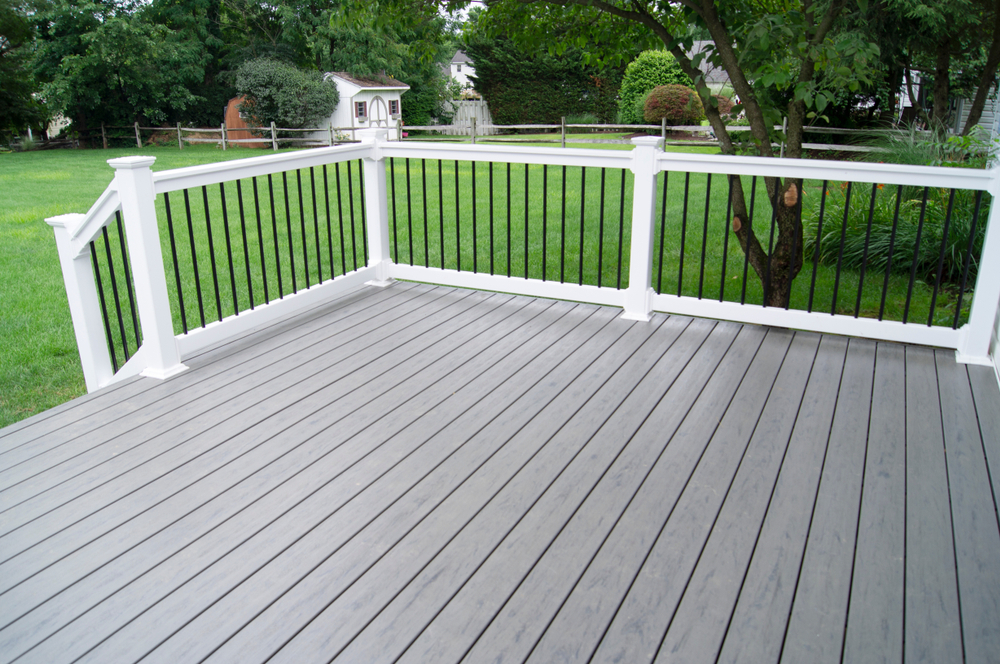
As the year draws to a close, property owners in Southern California face a crucial opportunity to prioritize their properties’ safety and longevity. Year-end inspections, particularly for elevated exterior elements like decks and balconies, are significant in maintaining structural integrity, ensuring tenant safety, and meeting regulatory requirements such as those mandated by SB 326 Inspection standards. Ensuring Safety and Compliance with SB 326 Inspections Year-end inspections are a proactive measure to identify and address potential safety hazards before they escalate. For multi-family properties and homeowner associations (HOAs), regular inspections of decks, balconies, and other elevated exterior elements are not just recommended—they are required under California law. SB 326 Inspection regulations mandate periodic assessments to ensure these structures meet safety standards. Key reasons for prioritizing year-end inspections include: Preventing Accidents: Elevated structures are exposed to wear and tear from weather, use, and time. Cracks, wood rot, or weakened supports can lead to catastrophic failures if left unaddressed. Legal Compliance: Non-compliance with SB 326 Inspection requirements can result in fines, penalties, and liability in the event of an accident. Staying ahead of these inspections ensures peace of mind for property owners and residents. Cost Savings: Addressing minor issues identified during an inspection is far more cost-effective than dealing with major repairs or legal repercussions from neglect. Benefits of Timing Inspections at Year-End The end of the year provides an ideal checkpoint for property owners to assess their properties and plan for the year ahead. Some of the benefits of scheduling inspections during this time include: Preparing for Weather Conditions Southern California’s weather patterns, including occasional rains and temperature fluctuations, can exacerbate structural vulnerabilities. Identifying and repairing issues before the rainy season minimizes the risk of water damage and corrosion. Budgeting for Maintenance Year-end inspections provide valuable insights for budgeting and financial planning. By identifying necessary repairs or replacements, property owners can allocate resources effectively for the coming year and avoid unexpected expenses. Maintaining Property Value with an SB 326 Inspection A well-maintained property retains its value and attracts quality tenants or buyers. Demonstrating compliance with SB 326 Inspection requirements assures potential residents or investors of the property’s safety and reliability. Partnering with Experts for Comprehensive Inspections Conducting a thorough year-end inspection requires expertise. Partnering with licensed inspectors experienced in SB 326 Inspection protocols ensures that your property is evaluated accurately and comprehensively. These professionals will assess: Load-bearing components for structural integrity. Waterproofing systems for signs of deterioration. Railings, connections, and other critical elements. Working with skilled inspectors allows property owners to receive actionable recommendations and ensures compliance with legal requirements. Take Action Before the New Year with an SB 326 Inspection Year-end inspections are more than a regulatory obligation—they invest in safety, compliance, and property value. Don’t wait until issues become emergencies. Contact our team of qualified inspectors today to schedule your SB 326 Inspection and start the new year with confidence. Make your property safer for residents while ensuring compliance with California’s strict building safety laws. Click here to get in contact with an expert from Deck Inspectors today! Deck Inspectors for Southern California is happy to offer our services in Los Angeles County, Riverside County, Orange County as well as San Diego County and all Southern California surrounding areas like: Los Angeles, Irvine, Long Beach, La Jolla, Glendale, Pasadena, Santa Ana, Huntington Beach, Dana Point, Burbank, Santa Monica, Anaheim, Temecula, Encinitas, Chula Vista, Vista, Mesa, San Diego, Oceanside, Escondido, Carlsbad, Poway, Mission Viejo, and El Cajon.
The Hidden Costs of Ignoring Regular Deck Inspections
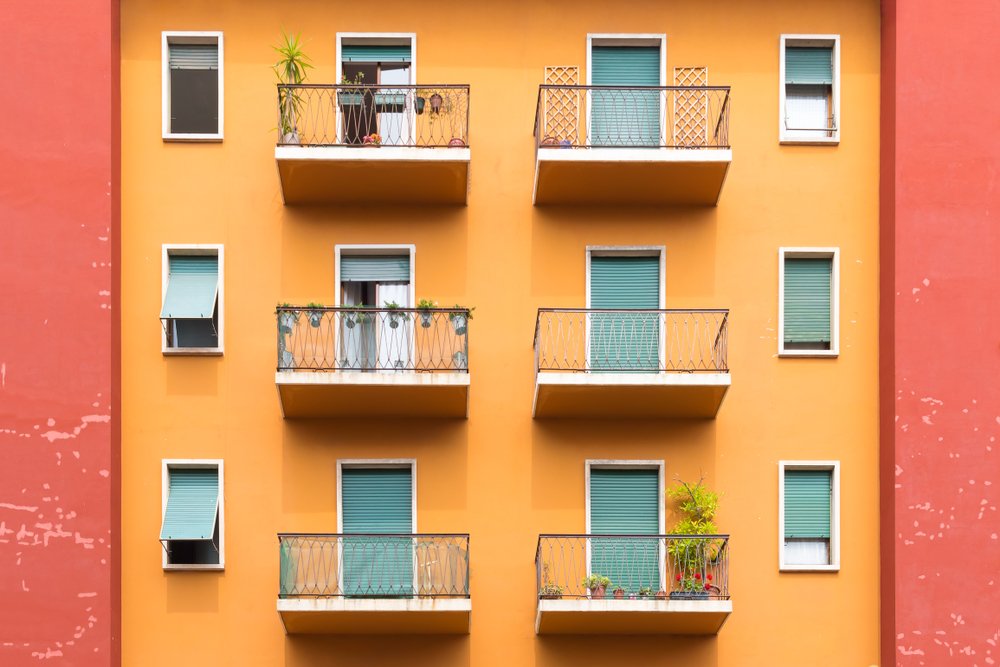
Decks are a valuable feature of many apartment complexes in Southern California, providing residents with outdoor living space and enhancing property value. However, neglecting regular inspections can lead to costly consequences for property owners and managers; overlooking the maintenance of apartment deck structures risks safety issues, legal liabilities, and expensive repairs. Here’s why proactive inspections are essential. Safety Risks That Could Lead to Legal Liabilities An uninspected apartment deck can develop hidden issues that compromise its structural integrity. Over time, weather exposure, moisture infiltration, and regular use can weaken key components, such as support beams, fasteners, and surface materials. Increased Risk of Accidents When structural issues go unnoticed, the risk of accidents—such as deck collapses or railing failures—rises significantly. These incidents can lead to serious injuries or fatalities, putting property owners at risk of lawsuits and hefty legal settlements. Non-Compliance with Local Regulations California laws, such as SB 721 and SB 326, mandate regular inspections of elevated exterior elements for multi-family dwellings. Failure to comply with these regulations can result in fines, penalties, and legal action. Additionally, non-compliance may make securing or renewing insurance coverage for your property challenging. Financial Consequences of Deferred Maintenance Ignoring regular inspections may save money in the short term, but the long-term financial impact is far greater. The cost of reactive repairs or complete replacements far exceeds the cost of routine maintenance and timely inspections. Expensive Repairs and Replacements Small issues, such as minor water damage or loose fasteners, can escalate into major problems if left unaddressed. For example, untreated rot in an apartment deck support beam could lead to a full structural replacement, costing tens of thousands of dollars. Decreased Property Value A neglected apartment deck can detract from the overall appeal of your property. Potential buyers or tenants may view the lack of maintenance as a sign of poor management, reducing demand and property value. Higher Insurance Premiums Insurance companies view poorly maintained properties as high-risk. Neglecting inspections can result in increased premiums or denial of coverage, further straining your budget. Proactive Apartment Deck Inspections Save Money & Ensure Safety The best way to avoid the hidden costs of neglect is to prioritize regular apartment deck inspections. Partnering with professional inspectors ensures that potential issues are identified early and addressed before they escalate. Routine inspections also help you comply with local regulations and provide documentation demonstrating your safety commitment. Investing in regular inspections is not just about meeting legal requirements—it’s about protecting your property, residents, and financial future. Don’t wait until problems arise—take a proactive approach to deck safety and maintenance today. Click here to get in contact with an expert from Deck Inspectors today! Deck Inspectors for Southern California is happy to offer our services in Los Angeles County, Riverside County, Orange County as well as San Diego County and all Southern California surrounding areas like: Los Angeles, Irvine, Long Beach, La Jolla, Glendale, Pasadena, Santa Ana, Huntington Beach, Dana Point, Burbank, Santa Monica, Anaheim, Temecula, Encinitas, Chula Vista, Vista, Mesa, San Diego, Oceanside, Escondido, Carlsbad, Poway, Mission Viejo, and El Cajon.
Winter-Proofing Your Deck: Safety and Maintenance Tips

Winter in Southern California may not bring snowstorms, but cooler temperatures and occasional rain can still damage outdoor structures. Proper preparation is essential to keeping your deck safe, durable, and great-looking. By partnering with professional deck inspectors and following essential maintenance tips, you can protect your investment and ensure it withstands winter’s challenges. Preventative Maintenance: A Key to Longevity Regular maintenance is the cornerstone of preserving your deck’s structural integrity, especially as winter approaches. If left unchecked, moisture from rain and dew can seep into materials, causing rot, rust, or warping. Clean and Seal the Surface Begin by thoroughly cleaning your deck to remove dirt, debris, and mold. A clean surface looks better and prevents water from pooling, which can cause damage. Applying a weather-resistant sealant adds an extra layer of protection against moisture infiltration. Inspect for Damage Before winter hits, conduct a thorough inspection of your deck. Look for signs of wear, such as loose boards, rusted nails, or cracks in the wood. If you’re unsure about the deck’s condition, enlist the help of professional deck inspectors who can identify hidden structural issues that might worsen over time. Trim Surrounding Vegetation Overgrown bushes or trees near your deck can trap moisture and create shaded areas that promote mold growth. Trimming back vegetation improves air circulation, allowing the deck to dry out more efficiently. Safety Measures for Winter Weather Winter-proofing your deck is about more than maintenance; it’s about ensuring safety for everyone who uses it. Ensure Proper Drainage Poor drainage can lead to water pooling on your deck, increasing the risk of slips and falls. Check gutters and downspouts near your deck to ensure they direct water away from the structure. Consider installing anti-slip mats or a non-slip treatment if water collects on the deck surface. Reinforce Railings and Supports Railings and supports are crucial in keeping your deck safe during wet and windy weather. Check for loose railings or wobbling supports, as these pose significant safety hazards. Professional deck inspectors can provide expert evaluations and recommend repairs to ensure your deck meets safety standards. Protect Furniture and Accessories Winter weather can also affect outdoor furniture and accessories. Cover or store these items to prevent them from trapping moisture against the deck surface, which can lead to discoloration or damage. Trust the Deck Inspectors Experts for Peace of Mind Winter-proofing your deck requires attention to detail and a proactive approach. While DIY maintenance is helpful, professional deck inspectors bring the expertise to identify hidden vulnerabilities and recommend effective solutions. Regular inspections and timely repairs can extend your deck’s lifespan and provide peace of mind during winter. Contact our experienced deck inspectors to prepare your deck for winter today. Schedule a consultation and ensure your deck remains safe, beautiful, and ready for the seasons ahead. Don’t let winter weather catch you off guard—protect your investment with expert care. Click here to get in contact with an expert from Deck Inspectors today! Deck Inspectors for Southern California is happy to offer our services in Los Angeles County, Riverside County, Orange County as well as San Diego County and all Southern California surrounding areas like: Los Angeles, Irvine, Long Beach, La Jolla, Glendale, Pasadena, Santa Ana, Huntington Beach, Dana Point, Burbank, Santa Monica, Anaheim, Temecula, Encinitas, Chula Vista, Vista, Mesa, San Diego, Oceanside, Escondido, Carlsbad, Poway, Mission Viejo, and El Cajon.
How to Prepare for an SB 721 or SB 326 Inspection in 2025
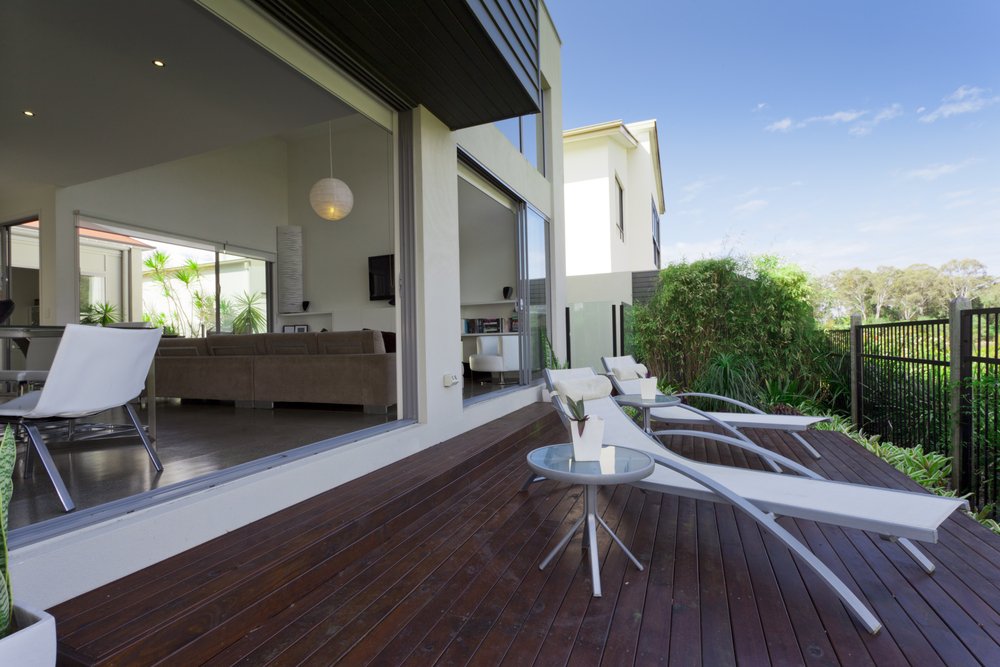
California’s SB 721 and SB 326 inspection requirements are crucial for ensuring the safety of multi-family dwellings, especially those with elevated exterior elements like balconies, decks, and walkways. With 2025 approaching, property owners and managers must understand how to prepare for these mandatory inspections to ensure compliance and maintain tenant safety. Understanding the Requirements of SB 721 and SB 326 SB 721 applies to apartment buildings with three or more units, while SB 326 is specific to condominium and homeowners’ associations (HOAs). Both laws mandate inspections of elevated exterior elements to identify potential safety hazards, such as wood rot, corrosion, or structural weakening. Key compliance details include: Inspection intervals: Every six years for SB 721 and every nine years for SB 326. Qualified inspectors: Licensed architects, engineers, or contractors with proper certifications must conduct the inspections. Scope of inspections: Focuses on load-bearing components, waterproofing systems, and other structural elements critical to safety. Failure to comply can lead to fines, penalties, and liability issues, making preparation essential for property owners and managers. Steps to Prepare for Your SB 721 or SB 326 Inspection Review Past Inspection Reports If your property has undergone inspections, review these reports to understand any previous deficiencies or repairs. Knowing your property’s history can help the inspector focus on high-risk areas and streamline the process. Conduct a Pre-Inspection Assessment Before the official inspection, a preliminary evaluation of all elevated exterior elements must be conducted. Look for visible signs of wear, such as: Cracks or gaps in wood or concrete. Signs of rust, mold, or water damage. Loose railings or supports. Identifying these issues early allows you to address minor repairs before the official inspection. Hire a Qualified Inspector Ensure that your inspector meets the legal requirements for conducting SB 721 or SB 326 inspections. Verify their credentials and experience in inspecting similar properties. Working with a knowledgeable professional ensures the process complies with all regulatory standards. Notify Residents Inform your tenants or HOA members about the upcoming inspection. Provide clear communication about the purpose of the inspection, the expected timeline, and any potential disruptions. Transparency helps foster cooperation and minimizes resistance from residents. Prepare Documentation Organize and provide the following documents to your inspector: Building plans and blueprints. Past maintenance and repair records. Previous inspection reports. Having these documents readily available speeds up the inspection process and gives the inspector a clear understanding of the property’s condition. Budget for Repairs Some repairs may be required based on inspection findings. Setting aside a maintenance budget ensures that necessary repairs can be addressed promptly without financial strain. Staying Ahead of Compliance Preparing for your SB 721 or SB 326 inspection in 2025 involves proactive maintenance, clear communication, and collaboration with qualified professionals. By taking these steps, property owners and managers can ensure compliance, avoid penalties, and prioritize the safety of their residents. If you’re unsure where to start, contact our team of licensed inspectors for a free consultation. Let us help you navigate the complexities of SB 326 and ensure your property meets all safety standards. Click here to get in contact with an expert from Deck Inspectors today! Deck Inspectors for Southern California is happy to offer our services in Los Angeles County, Riverside County, Orange County as well as San Diego County and all Southern California surrounding areas like: Los Angeles, Irvine, Long Beach, La Jolla, Glendale, Pasadena, Santa Ana, Huntington Beach, Dana Point, Burbank, Santa Monica, Anaheim, Temecula, Encinitas, Chula Vista, Vista, Mesa, San Diego, Oceanside, Escondido, Carlsbad, Poway, Mission Viejo, and El Cajon.
